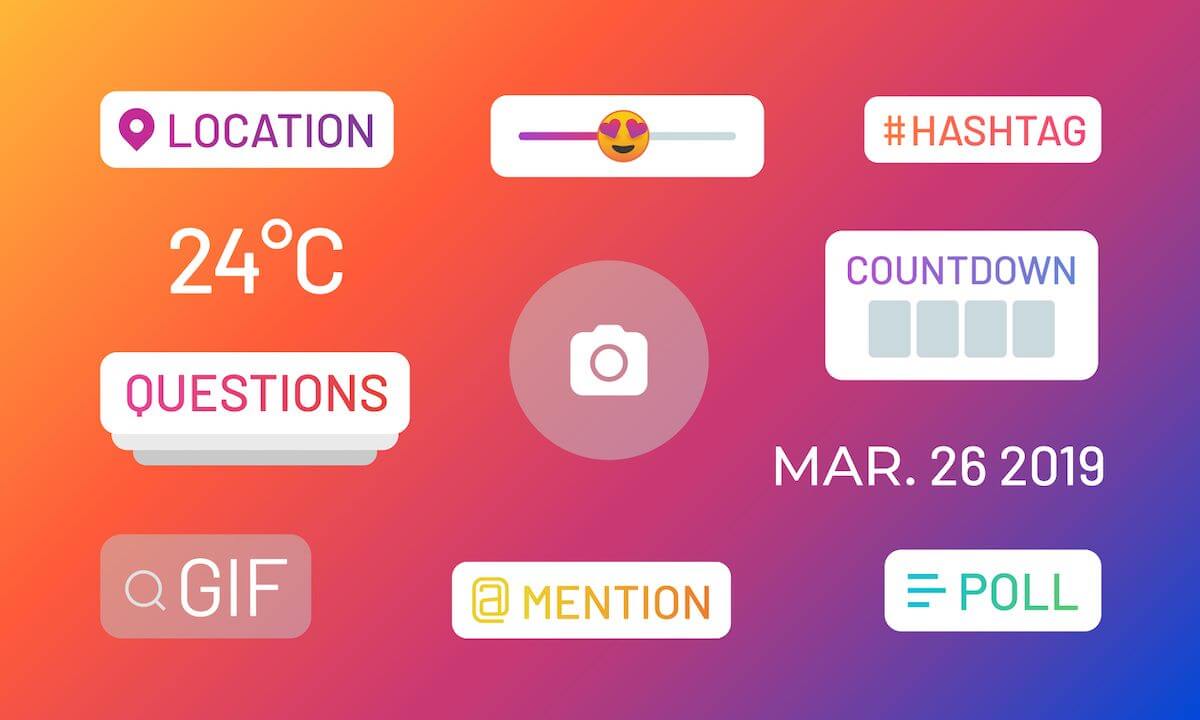Top 10 Marketing Trends for 2020 You Can’t Afford to Miss

Marketing trends are changing and evolving each day. It is our responsibility as a marketing agency, to stay ahead of the curve when it comes to these latest advancements to ensure we continue to drive profitable business for our clients.
You may recall that we published an article on the 6 business marketing trends to exploit in 2019. You can read this here. These trends are still relevant now as many businesses and agencies still aren’t capitalising on them. However, throughout 2019 and early into 2020 several new tactics and channels have shown exceptional growth and simply must be taken advantage of now.
10. Podcasts
The rise in smart speakers such as the Amazon Echo and Google Home has again meant that voice searches have soared throughout last year – fuelling the ever-increasing popularity of podcasts around the world.
In the UK alone, there are 7.1 million regular listeners to podcasts – that’s 1 in 8 people. A staggering 24% increase year on year, and we are expecting this number to rise considerably throughout 2020. Due to this explosion, we are predicting a large rise in podcast advertising this year and a surge in the number of new podcast launches. Research shows that podcasts generate around four times better brand recall than scroll, pop-up and static ads and that podcast advertising spend is set to effectively double to $1.6bn by 2022.
9. TikTok

Global Social phenomenon TikTok is currently smashing it with Generation Z, who make up the majority of its audience base. As one of the fastest growing social media platforms in the world, TikTok allows users to quickly and easily produce and share short videos with music, filters and effects. If your target customer falls within the Gen Z’ers age bracket then TikTok could be the perfect platform to engage with them.
Videos can be found by hashtag, and the platform recently updated its user interface to include a ‘discover’ feature similar to Instagram’s ‘explore’ page. This hosts a wide variety of topics – we will certainly be keeping an eye on as we believe this feature will attract a wider audience to the app. TikTok’s new self-serve ad platform is currently in development, but some businesses have access to this in beta so watch this space.
8. AI
Artificial Intelligence (AI) marketing is a data-driven approach that has taken the digital world by storm and will continue to do so throughout 2020 and beyond. AI marketing relies on concepts like machine learning to anticipate the audiences next move, enabling brands to produce highly personalised consumer experiences and improve the customer journey.
Through the use of AI, you can gain a deeper understanding of what your customers are thinking, saying, and feeling about your brand, all in real-time. This allows you to build out detailed consumer profiles, which in turn gives you the intelligence to deliver the right message to the right person at the right time – and to quickly modify that message to maximise effectiveness.
7. Augmented Reality

Unlike Virtual Reality (VR) which effectively shuts out the physical world and allows a fully immersive experience, Augmented Reality (AR) adds digital elements to a live view often by using the camera on a smartphone (a good example being the fun filters built into social apps such as Snapchat and Instagram).
The opportunities for marketers are endless. For now, the novelty and entertainment factor alone means that brands can use AR to attract and engage their audiences in new and exciting ways creating differentiation and stand-out from the competition. Equally exciting are the possibilities AR presents to e-commerce brands, by allowing the user to virtually try out and compare products and access all the information they need to help them make a purchase decision. For example, Vans have recently integrated AR into their website. When customising your own Vans trainers, you can now virtually try them on before committing to purchasing, using your iPhone or Android camera.
Whilst AR is not yet a mainstream, its presence is accelerating fast. The global AR market is currently worth around $27bn. Statistica predicts this will grow to $209bn by 2022. To put this in perspective, the global smartphone market is worth around $431bn.
6. Programmatic Advertising
If you want to target your audience on a granular level and use ad budget smarter, programmatic advertising could be the way forward for your automotive brand.
Programmatic advertising is an automated process of buying and selling ad space online. With the use of cookies and AI, you can target users based on their geographical area, demographics, interests and how they’ve previously interacted with your website (retargeting). Programmatic uses machine learning to understand the goals you set over time and the performance of your campaigns to automatically optimise them for optimal performance.
5. Conversational Marketing
Conversational marketing is a feedback-orientated approach used to increase engagement with your brand, develop customer loyalty and grow your customer base, thus driving revenue for your business. Real-time messaging should be designed specifically around the needs of your customers, allowing them to pick up where they left off, at a time that suits them.
Chatbots are a great way of being able to provide 24/7 support to your customers and prospects, providing answers to frequently asked questions based on the data you collect. Living in a world where life is fast-paced and people need to know answers now, the implementation of chatbots and conversational marketing is an absolute must for all brands.
4. Social Messaging
Using Social messaging effectively for networking and generating leads is still greatly underutilised. WhatsApp, for example, has 1.5 billion users worldwide. Through WhatsApp Business you can connect with your audience in a simple, reliable way – engaging and building frictionless conversational experiences that not only enhance customer experience and loyalty but also generates new business.
Instagram has also hit the ground running this year by revealing they have started developing and testing DM’s for the desktop version of their platform. This feature will be a welcome tool for businesses. Last year, Mark Zuckerberg, Facebook CEO, said future plans include users from Facebook, WhatsApp and Instagram being able to message each other regardless of which platform they are using.
3. Social Media Stories

As marketing trends go, stories are actually nothing new, in fact, Instagram released its story function back in 2016, and today over 500 million people use the feature daily. Whilst initially certain parts of the user demographic may have felt a little reluctant to roll their sleeves up, get creative and put their content up in lights at the top of the feed, stories are now very commonplace, in fact some users now only really engage with them, over ‘regular’ page content.
We’ve put stories at number 3 as it’s amazing how underutilised they are by businesses within their social campaigns. Stories provide a fast and effective way for brands to deliver authentic ‘here and now’ content from wherever they are in the world – and are great for live coverage of events and shows, for example. Stories are also super easy to customise with filters, stickers and interactive elements that will keep your audience engaged for longer. Even better, when your following is greater than 10,000 on Instagram, you can add a CTA to your stories, urging your followers to find out more, subscribe or make a purchase with a simple swipe up.
2. Influencer Marketing & User Generated Content
The social media influencer market is set to be worth more than $10 billion by 2020, and it’s not difficult to see why, as influencer marketing is like word of mouth on steroids. We all follow influencers as we want to see their content, and because influencers build up very loyal, trustworthy fanbases, their reach and ability to engage their audience has great value as a platform for advertisers.
Yes, we all now know that occasionally our favourite social star is marketing to us, but we still consume the content, and if the marketed brands have got their targeting right, there’s still a good chance you will take notice and potentially want to find out more. If nothing else, the brand awareness, positioning and alignment with the personal brand the influencer represents has got huge value in itself.
Whilst working with an influencer can boost the overall credibility of your brand, improve customer retention and grow your bottom line; you don’t need to spend millions to benefit. In recent years the influencer market has segmented into mega-influencers, macro-influencers, micro-influencers and nano-influencers. A lot of the influencer work we do today focuses around the micro-influencer – someone who has between 1,000 to 100,000 followers. These individuals are both affordable, and highly targeted as they typically focus on a specific niche and are generally regarded as industry experts.
User-Generated Content, on the other hand, is where we encourage your customers to share their feedback on your product or service across social media. It’s real. It invites engagement and inspires action. UGC can be leveraged through a campaign or by simply asking customers to use a specific hashtag with their thoughts and feedback which you can then share and feature on your feed.
1. SERP Position Zero
Well it sounds cool enough to make number 1, right? Position Zero (P0) is the first Google search result you see and appears above organic SEO listings. P0 is also referred to as a ‘featured snippet’, and it directly answers a searchers’ question – without them needing to click to see the result.
Gaining position zero is a tough task but it’s not impossible. Crafting a compelling piece of content that directly answers a question (or a long-tail query you want to feature for) is the starting point. Content pieces like ‘how to’ guides, definitions, top 10 lists and FAQs are often found in this most sought after position. The new summit of the constantly changing Google mountain.
The P0 result is used for voice search results which as we know, is growing increasingly popular. If you gain P0 on Google, you will occupy more SERP territory, increasing brand awareness, trust and clicks.
Want To Stay On Trend?
Do you want to implement any of these key marketing trends this year? Our dedicated team of marketing specialists are here to help.
Make 2020 a more successful year for your business by utilising some of these marketing trends. If you’d like to find out what we can do to help your business, get in touch today by calling 01332 372728 or by emailing anna@marketing.dev-wda.com.
Want to get more from your digital marketing?
Complete our 50 point interactive checklist!
